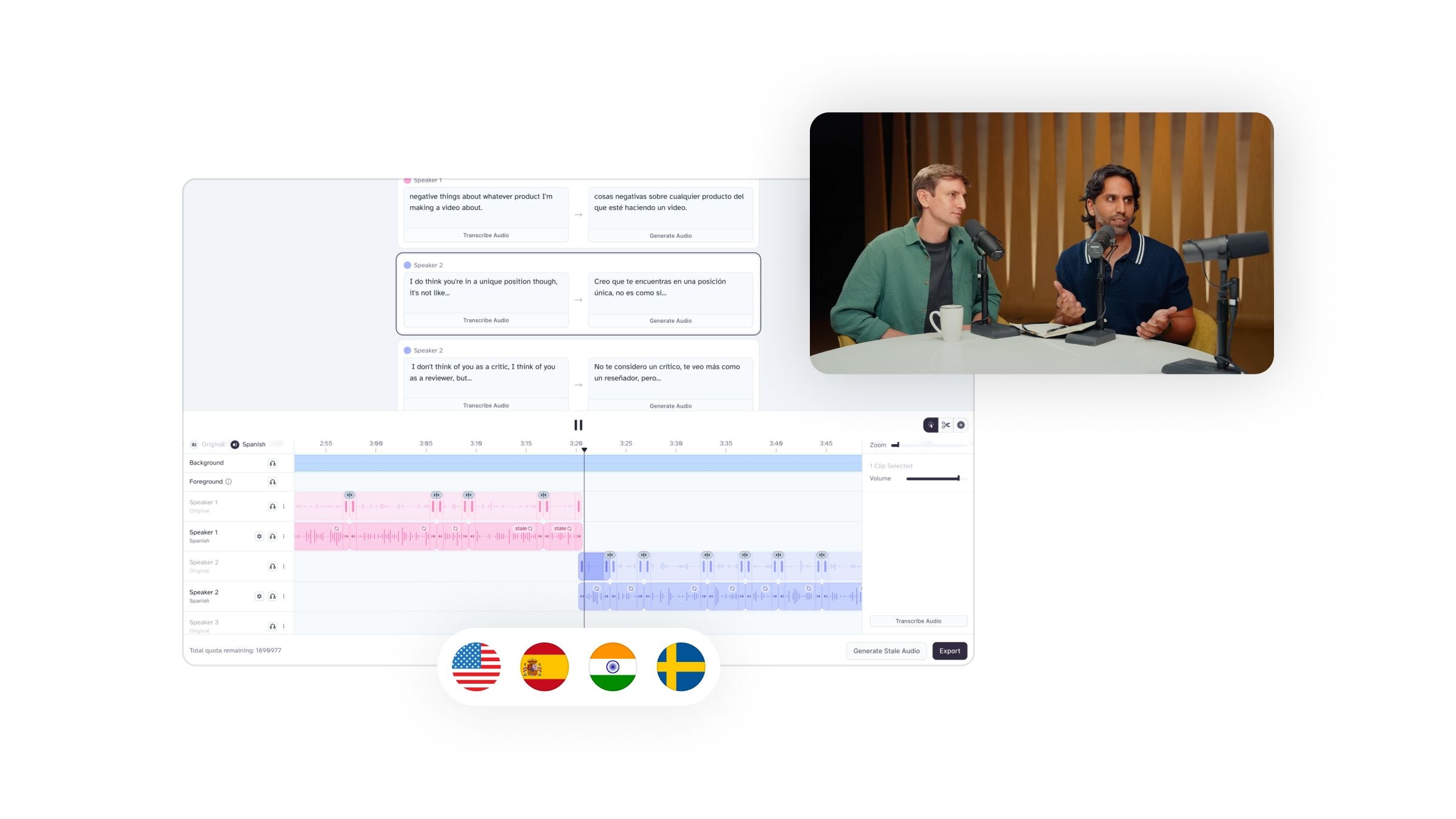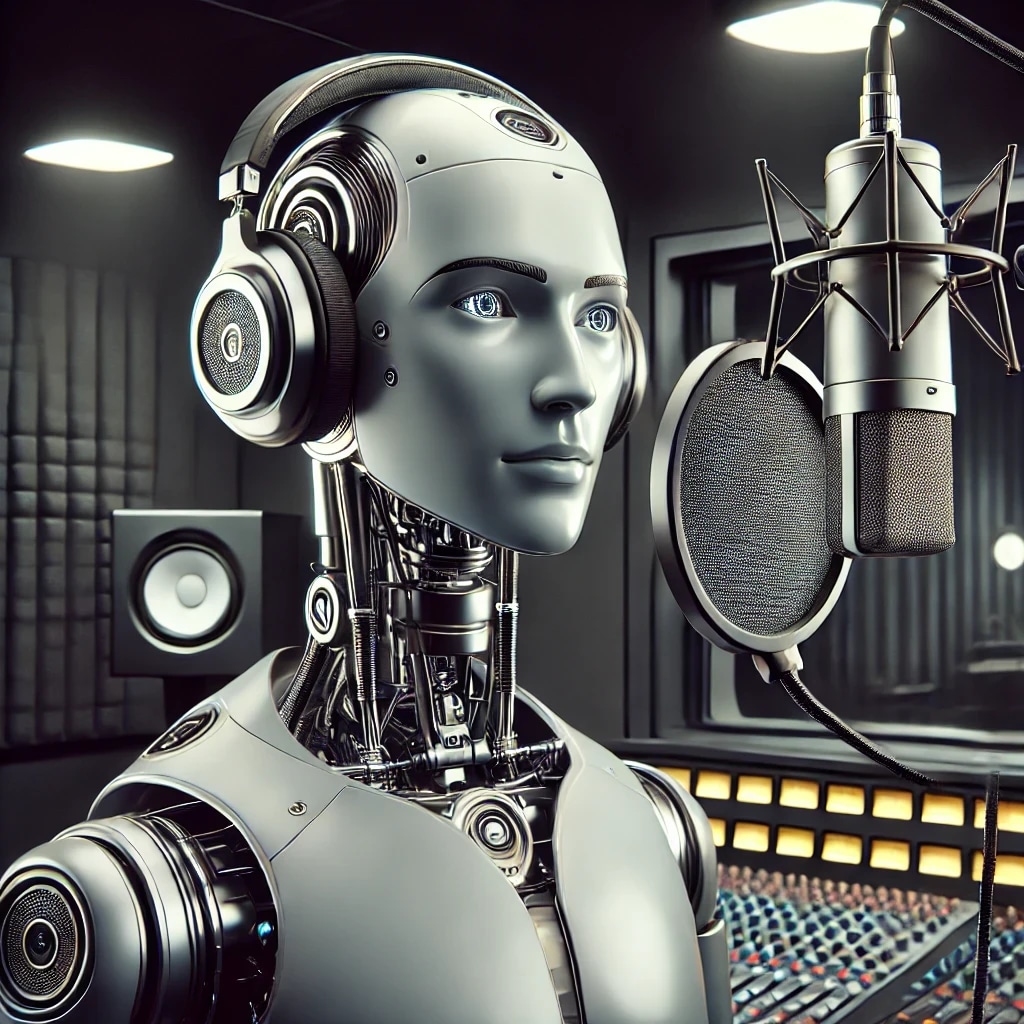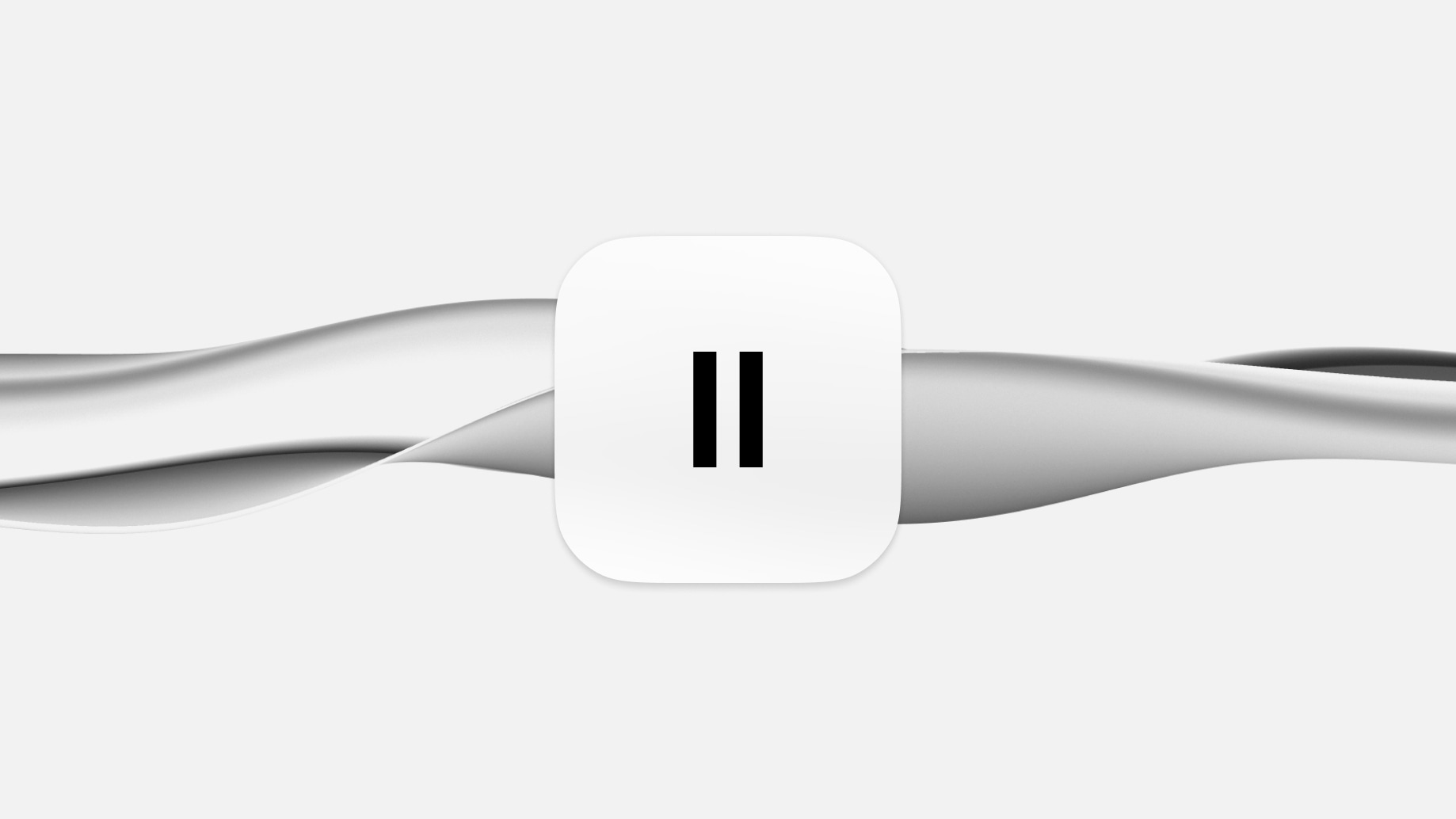
Översätt ljud och video samtidigt som du bevarar känslan, tajmingen, tonen och de unika egenskaperna hos varje talare
Videöversättning och AI-dubbning bryter språkbarriärer och gör videor förståeliga världen över. I den här artikeln utforskar vi vad de är och hur de fungerar.
Videöversättning och AI-dubbning revolutionerar hur vi konsumerar innehåll. De gör det möjligt för videor att förstås globalt och övervinna språkbarriärer. Denna teknik är avgörande i en värld där videor enkelt korsar gränser. Det handlar inte bara om att översätta ord—det handlar om att bevara originalvideons ton, känsla och sammanhang.
Vill du komma igång direkt? Prova ElevenLabs AI Dubbning & Videöversättare verktyg själv.

Översätt ljud och video samtidigt som du bevarar känslan, tajmingen, tonen och de unika egenskaperna hos varje talare
I den här artikeln går vi igenom vad videöversättning och AI-dubbning är, hur de fungerar och varför de är viktiga om du vill kommunicera globalt.
Videöversättning och AI-dubbning förändrar hur vi upplever innehåll över språk. Till skillnad från traditionell dubbning, där mänskliga skådespelare tröttsamt spelar in dialogen igen, använder AI-dubbning sofistikerade algoritmer för röstkopiering och innehållsöversättning.
Denna teknik översätter inte bara ord utan fångar också originaltalarnas ton och känsla, vilket ger en mer autentisk tittarupplevelse.
Neurala nätverk, en typ av artificiell intelligens som efterliknar hjärnans funktion, spelar en nyckelroll i AI-dubbning. Dessa nätverk analyserar stora mängder språkdata och lär sig nyanser och idiomatiska uttryck för att säkerställa att översättningarna är korrekta och kulturellt relevanta.
Dessutom utmärker sig AI-dubbning för sin effektivitet. Den minskar produktionstiden och kostnaderna avsevärt, vilket gör det till ett genomförbart alternativ för innehållsskapare som riktar sig till en global publik. Detta är särskilt viktigt i en innehållsrik digital miljö där snabbhet till marknaden kan vara en konkurrensfördel.
Videöversättning och AI-dubbning utvecklas ständigt. Fortsatta framsteg inom maskininlärningsalgoritmer innebär att AI kan anpassa sig till olika dialekter och accenter, vilket ytterligare förbättrar lokaliseringen av innehåll. Denna kapacitet revolutionerar industrier som film, tv och onlineutbildning, där relaterbart och tillgängligt innehåll är nyckeln.
Det finns tre huvudsteg i processen för videöversättning och AI-dubbning. Dessa är följande:
Här börjar allt. AI lyssnar på originalvideon och fångar varje uttalat ord. Det handlar inte bara om att fånga ord, utan AI måste förstå olika sätt människor talar på, som olika accenter eller dialekter. Detta säkerställer att allt som sägs i videon känns igen korrekt innan översättning.
Nu är det dags att översätta. AI tar hänsyn till sammanhanget—situationen eller samtalsämnet—och kulturella nyanser. Detta innebär att den uppmärksammar hur saker sägs i olika kulturer för att hålla översättningen korrekt och meningsfull. Det är avgörande för att skämt, idiom och uttryck ska vara begripliga på det nya språket.
Det sista steget är att ge den översatta texten en röst. AI använder text-to-speech-teknologi för att skapa en röst som låter naturlig och matchar originaltalarnas stil. Målet är att få den dubbade versionen att kännas lika verklig och autentisk som originalet.
Grunden för hela denna process är maskininlärning, en typ av AI som blir smartare över tid. Genom att lära sig från varje översättning blir AI mer exakt och bättre på att hantera komplexa språkuppgifter.
Att använda verktyg för videöversättning och AI-dubbning ger skapare flera stora fördelar, särskilt jämfört med traditionella översättnings-/dubbningsmetoder.
En av de största fördelarna med videöversättning och AI-dubbning är att göra innehåll tillgängligt för människor världen över. Tänk dig en populär tv-serie eller utbildningsvideo. Ursprungligen är den på ett språk, kanske engelska. Men med AI-dubbning kan tittare från olika länder se den på sitt språk. Detta bryter ner språkbarriärer och låter fler människor njuta av och lära sig av innehållet, oavsett var de befinner sig.
Traditionellt sett var det dyrt att dubba en video till ett annat språk. Det innebar att anlita röstskådespelare, inspelningsutrustning och mycket tid. AI-dubbning förändrar detta. Det är ett mer prisvärt alternativ eftersom det använder teknik, inte människor, för att översätta och dubba. Detta innebär att företag kan spara pengar samtidigt som de erbjuder kvalitetsinnehåll på flera språk.
AI-dubbning är mycket snabbare än traditionell dubbning. Det gamla sättet innebar att spela in varje replik, vilket tar mycket tid. Med AI sker översättningen och dubbningen nästan omedelbart. Denna snabbhet innebär att företag kan producera och släppa innehåll på flera språk mycket snabbare. För industrier som nyheter eller underhållning, där timing är avgörande, är detta en betydande fördel.
När innehåll översätts och dubbas traditionellt går ibland den ursprungliga känslan eller emotionen förlorad. AI-dubbningstekniken syftar till att bevara talarens ursprungliga ton och känsla. Detta är viktigt eftersom det hjälper publiken att ansluta till innehållet på en djupare nivå, precis som den ursprungliga publiken gjorde.
Upptäck hur videöversättning och AI-dubbning revolutionerar olika industrier. Från underhållning till utbildning och affärer, dessa teknologier bryter språkbarriärer och öppnar upp nya möjligheter.

I filmens, tv-seriernas och onlineinnehållets värld spelar videöversättning och AI-dubbning en stor roll. Tänk dig att se en utländsk film på ditt eget språk utan att förlora den ursprungliga känslan av karaktärernas röster. Det är vad AI-dubbning gör. Det låter människor från olika delar av världen njuta av innehåll på sitt språk, vilket breddar publiken för filmskapare och innehållsskapare.
Utbildning handlar om tillgänglighet. Med AI-dubbning kan utbildningsmaterial som föreläsningar, dokumentärer och onlinekurser nå studenter globalt, oavsett språkbarriärer. Detta är särskilt viktigt för e-learningplattformar, där innehåll behöver vara förståeligt för elever från olika språkliga bakgrunder. AI-dubbning hjälper till att bryta ner dessa språkbarriärer och gör utbildning mer inkluderande.
För företag som verkar internationellt är kommunikation nyckeln. AI-dubbning kommer in i bilden i marknadsföringsvideor och utbildningsmaterial. Genom att översätta och dubba reklam- och utbildningsinnehåll kan företag nå en bredare publik och säkerställa att deras anställda över hela världen får samma kvalitet på utbildningen. Denna enhetlighet är avgörande för att upprätthålla företagets standarder globalt.

Eleven Labs erbjuder ett verktyg som möjliggör innehållsöversättning på 29 språk snabbt, med funktioner som röstöversättning, talardetektion och ljuddubbning. Du kan ladda upp från olika källor som YouTube, TikTok eller direkt via URL. Verktyget bevarar den ursprungliga röststilen och hanterar effektivt flera talare.

Rask AI specialiserar sig på att skapa transkriptioner, översättningar och voiceovers med unika funktioner som voice cloning och lip-sync (för närvarande i Beta). Det stöder översättning från nästan vilket språk som helst till över 130 språk, vilket gör det mångsidigt för en mängd olika projekt.
.webp&w=3840&q=95)
Dubdub.ai erbjuder AI-dubbning på över 40 globala språk. Det är anpassat för en mängd olika innehållstyper, inklusive utbildnings- och dokumentärvideor. Plattformen lovar snabba leveranstider, enkel samarbete och kontextmedvetna översättningar för en bättre dubbningsupplevelse.
Var och en av dessa verktyg erbjuder unika funktioner och kapaciteter, vilket gör dem lämpliga för en rad behov inom videöversättning och AI-dubbning. När du väljer en plattform, överväg faktorer som språksupport, användarvänlighet och specifika funktioner som stämmer överens med dina projektkrav.
Videöversättning och AI-dubbning är banbrytande teknologier som förändrar hur vi delar och konsumerar innehåll globalt. De bryter ner språkbarriärer och gör videor tillgängliga för en mångfaldig publik.
AI-dubbning, särskilt, bevarar den ursprungliga känslan och stilen, vilket ger en mer autentisk upplevelse. Verktyg som Eleven Labs spelar en avgörande roll i denna transformation och erbjuder effektiv och exakt dubbning på flera språk.
Dessa innovationer handlar inte bara om att förstå olika språk—de handlar om att koppla samman människor och kulturer. Intresserad av att uppleva denna teknik själv? Prova ElevenLabs' röstöversättning och AI-dubbning verktyg och se hur det kan transformera ditt innehåll.

Översätt ljud och video samtidigt som du bevarar känslan, tajmingen, tonen och de unika egenskaperna hos varje talare

Lokalisera videor med exakt kontroll över manus, översättning, timing och mer

Introducing a set of updates that expand what creators and developers can build with Eleven Music.
Drivs av ElevenLabs Agenter